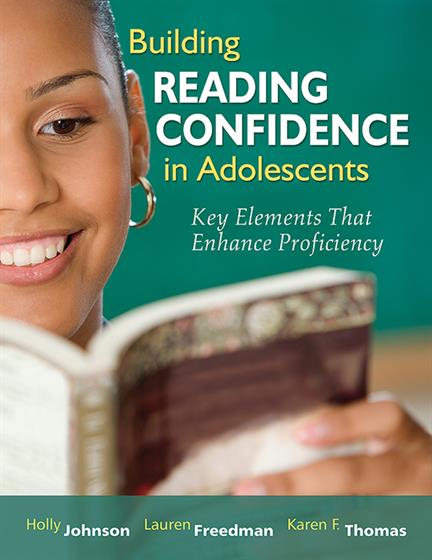Introduction
Why Is Self-Efficacy Important in Reading?
The Purpose of the Text
The Audience for This Text
Outline of the Text
1. The Four Elements of Reading Self-Efficacy
Identifying the Self-Efficacy Elements of C-I-M-S
Confidence
Independence
Metacognition
Stamina
Self-Efficacy and the Cueing System
Learning from Teachers and Students
Validating and Violating C-I-M-S
Validation of Readers' C-I-M-S
Environmental Elements
Teaching/Learning Dialectic
Curricular Decisions
Affective Issues
Strategies
Violation of Readers' C-I-M-S
Concluding Comments
2. A Closer Look at Confidence and Reading
What Teachers Have to Say About Confidence and Reading
Teaching and Learning
Curriculum Planning for Enhancing Reading Confidence
Affective Interactions and Confidence
Strategies for Building Readers' Confidence
What Students Have to Say About Confidence
Teaching and Learning
Curriculum Planning for Enhancing Reading Confidence
Affective Interactions and Confidence
Strategies for Building Readers' Confidence
Comparing Teacher and Student Thoughts on Reading Confidence
An Environment That Builds Confidence
Reading in Content Classrooms
Classroom Practices for Building Reading Proficiency
Strategies for Building Readers' Confidence
Class Meetings About Reading
Using Authentic Texts
Accessing Prior Knowledge
Making Connections to Reading
Paired Reading With Peers
Paired Reading With Younger Readers
Word Walls
Using Text Sets
Retrospective Miscue Analysis
Concluding Remarks
3. The Importance of Independence for Gaining Reading Proficiency
What Teachers Have to Say About Independence
Teaching and Learning
Curriculum Planning for Enhancing Reading Independence
Affective Interactions and Independence
Strategies for Building Readers' Independence
What Students Have to Say About Independence
Teaching and Learning
Curriculum and Reading
Affective Interactions and Independence
Reading Strategies to Enhance Independence
Comparing Teacher and Student Responses to Reading Independence
An Environment for Developing Independence
Classroom Conditions That Create Reading Independence
Scaffolding Reading Independence
Strategies for Creating Reading Independence
Interest Inventories
Silent Reading
Questioning the Author
Student Think Alouds
Note-Taking
Skimming, Scanning, Browsing
Concluding Remarks
4. A Closer Look at Metacognition and Its Role in Reading Proficiency
What Teachers Have to Say About Metacognition
Environment
Teaching and Learning Relationships
Curricular Planning to Foster Metacognitive Awareness
Affective Decisions and Metacognition
Strategies to Build Metacognition
What Students Have to Say About Metacognition and Reading
Environment
Teaching and Learning Relationships
Curricular Decisions
Affective Decisions
Comparing Teacher and Student Responses to Metacognition
Creating More Strategic Readers
Are We Preparing Metacognitive Teachers?
Concluding Remarks
5. The Significance of Stamina in Reading Proficiency
What Teachers Have to Say About Stamina
Teaching and Learning
Curricular Decisions That Enhance Reading Stamina
Affective Decisions and Stamina
What Students Have to Say About Stamina and Reading
Teaching and Learning
Curricular Decisions
Affective Decisions
Comparing Teacher and Student Thought on Stamina
An Environment for Building Readers' Stamina
Strategies for Building Readers' Stamina
Support Strategies
Graphic Organizers
Categorization of Information
Knowledge Charts
Choice Strategies
Wondering and Wandering
Assessment Strategies
Concluding Remarks
6. Developing Curriculum That Addresses Self-Efficacy
Addressing Self-Efficacy in the Classroom
Curricular and Instructional Models
Rigor
Relevance
Relationship
Text Sets of Multiple Print Materials
Rigor
Relevance
Relationship
Choice and Voice
Rigor
Relevance
Relationship
Sustained Time for Reading, Writing, Talking, Thinking, and Sharing
Rigor
Relevance
Relationship
Where Do We Go From Here?
References
Index



